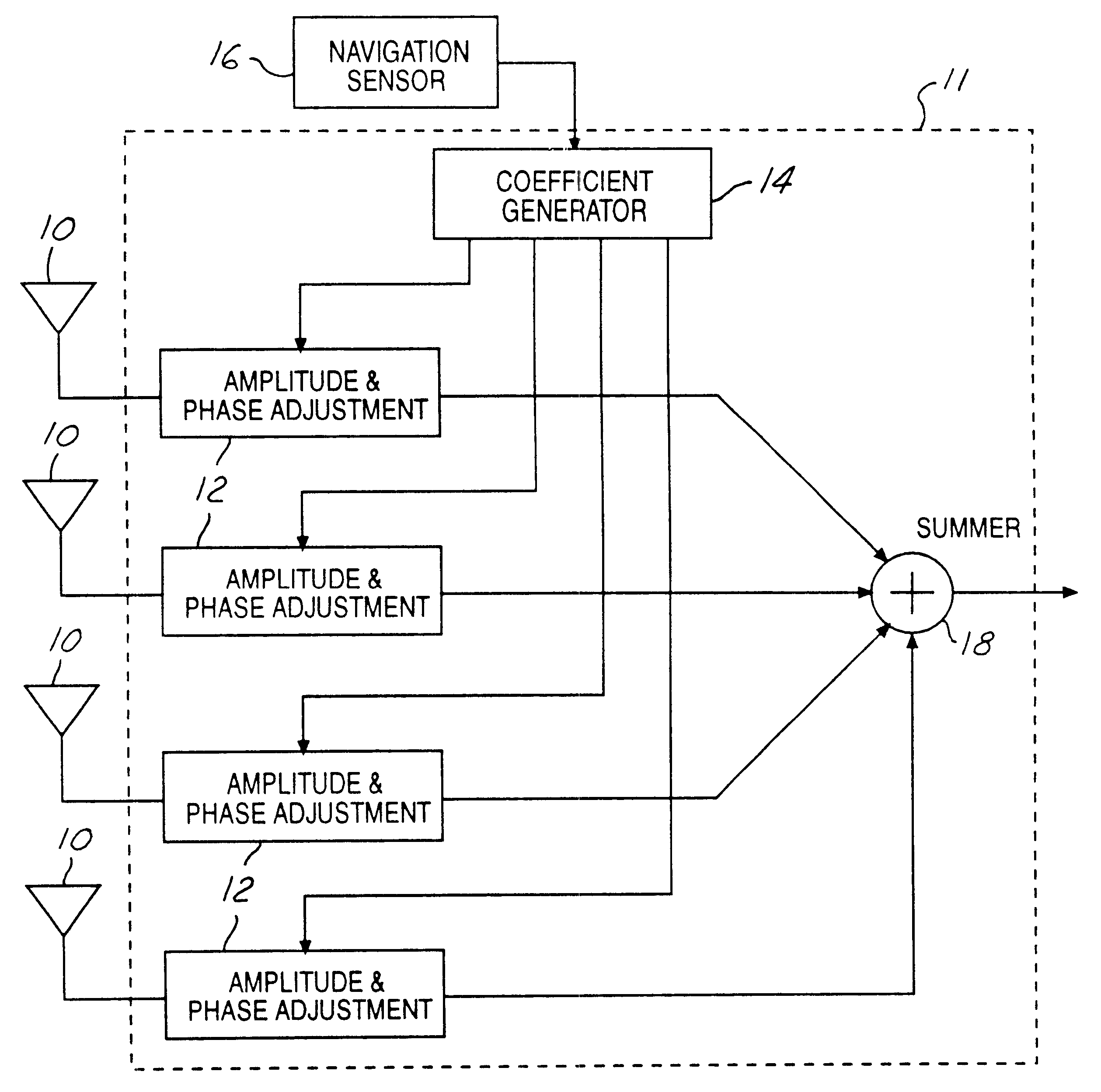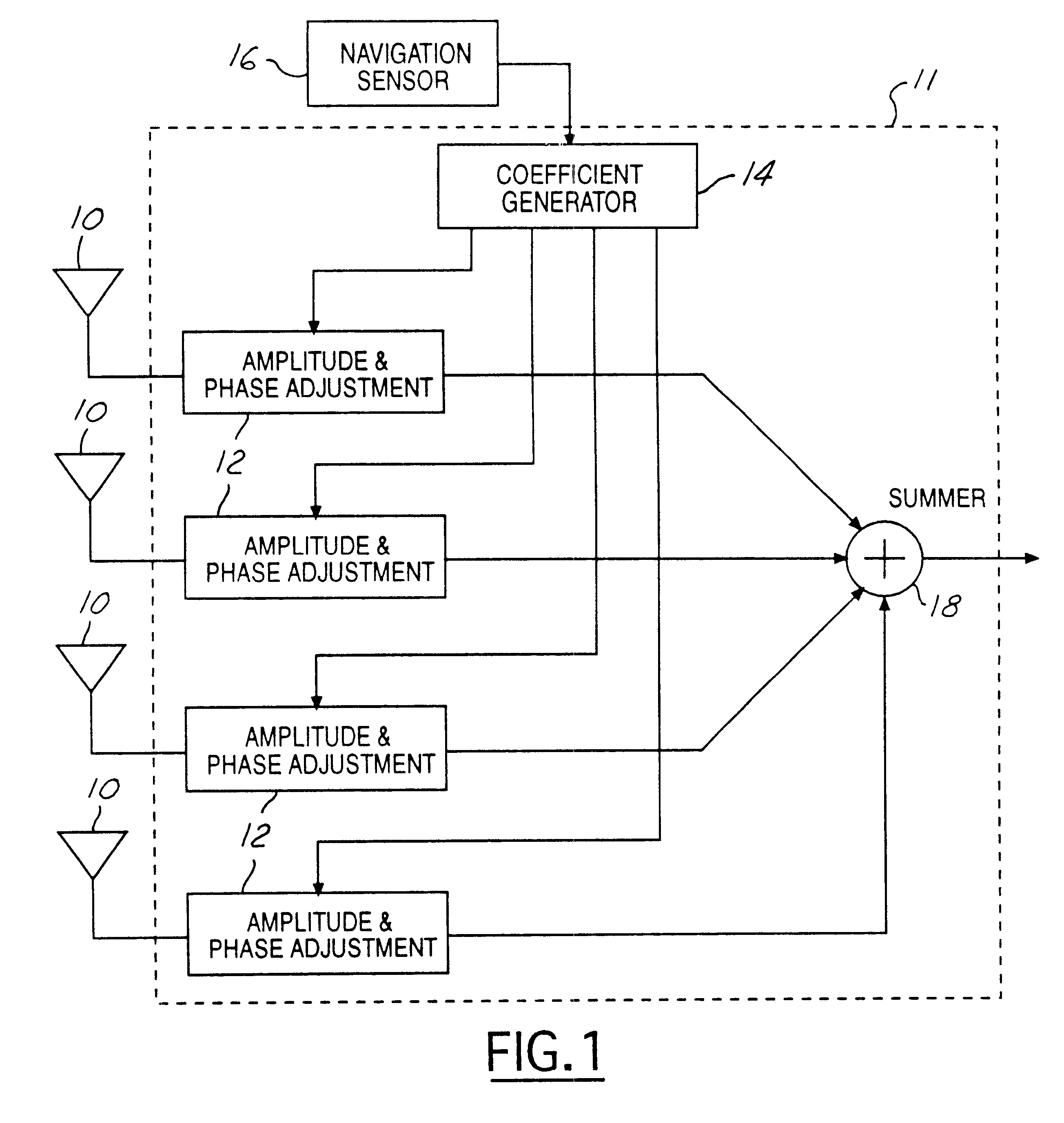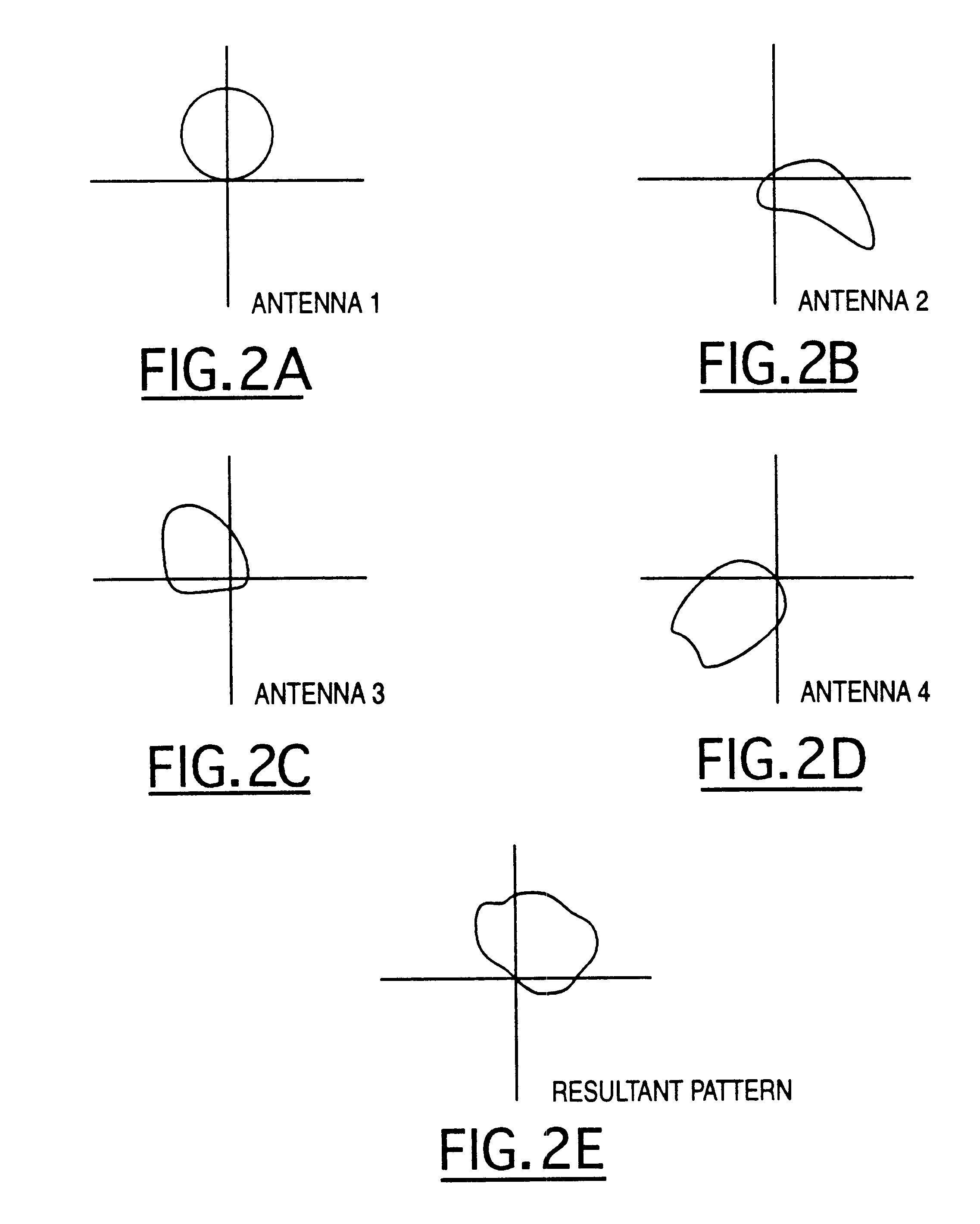Utilizing navigation direction data in a mobile antenna signal combiner
- Summary
- Abstract
- Description
- Claims
- Application Information
AI Technical Summary
Benefits of technology
Problems solved by technology
Method used
Image
Examples
Embodiment Construction
FIG. 1 shows an antenna combiner which utilizes navigational data to greatly improve tracking and response time of antenna beam steering. A plurality of antenna elements 10 and a navigation sensor 16 are coupled to an antenna combiner 11 which combines received broadcast signals into a single antenna signal. The antenna combiner comprises a plurality of amplitude and phase adjuster circuits 12 (each antenna element 10 is coupled to a respective circuit 12), a coefficient generator 14, and a summer 18. Amplitude and phase adjuster circuits 12 and coefficient generator 14 work in concert to reduce multipath distortion while maintaining reasonable gain of a desired signal from a particular direction. Coefficient generator 14 generates beam steering coefficients for each respective beam steering angle to be synthesized by the antenna elements. In a mathematical sense, the beam steering coefficients are a set of complex numbers which multiply the received broadcast signals. Any well know...
PUM
 Login to View More
Login to View More Abstract
Description
Claims
Application Information
 Login to View More
Login to View More - R&D
- Intellectual Property
- Life Sciences
- Materials
- Tech Scout
- Unparalleled Data Quality
- Higher Quality Content
- 60% Fewer Hallucinations
Browse by: Latest US Patents, China's latest patents, Technical Efficacy Thesaurus, Application Domain, Technology Topic, Popular Technical Reports.
© 2025 PatSnap. All rights reserved.Legal|Privacy policy|Modern Slavery Act Transparency Statement|Sitemap|About US| Contact US: help@patsnap.com



